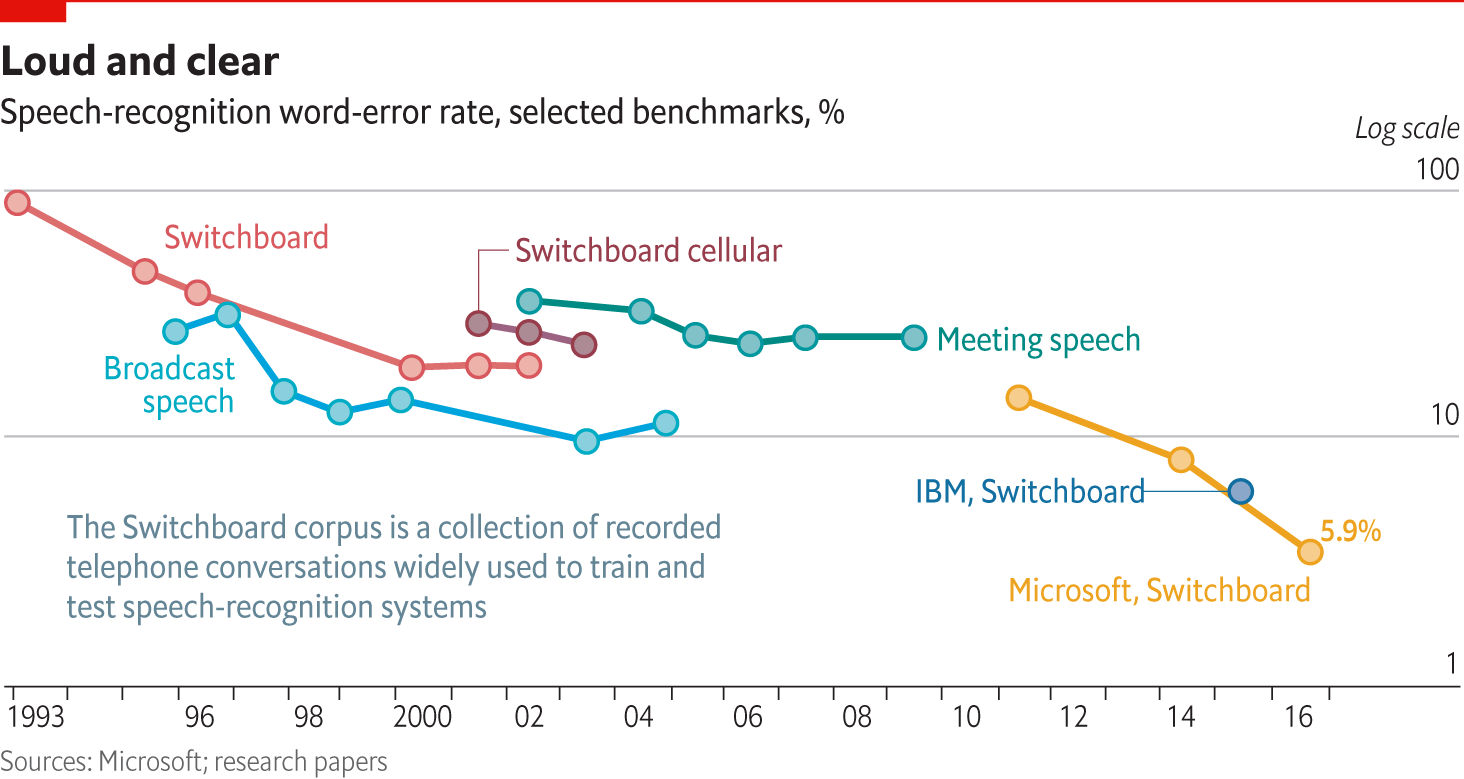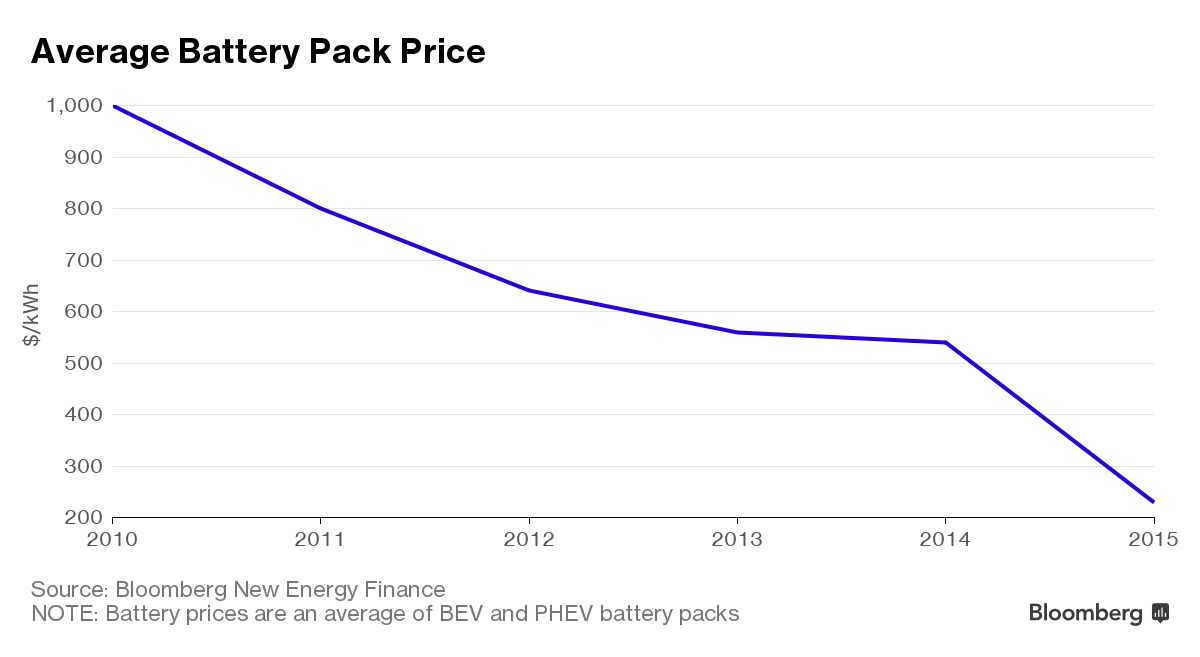My favourite Economist section, The Technology Quarterly recently came out with a focus on voice recognition.
The key reason for the focus is that Microsoft Switchboard reached a 5.9% error rate – which is the same error rate as a human transcriber and considerably better than the average offshore call centre operator I’ll bet…

There are investment outcomes from this over the next few years I’m sure, mostly in continued cost savings for companies, lost jobs in call centres and more wage pressure at the low end of the income scale. But these trends have been in place already for a number of years.
What’s of more interest to me is the exponential improvement in accuracy over the last five years.
One of my key “investment pivots” is the take up of driverless cars – knowing whether they will be here in five years or fifty years is incredibly important for a range of stocks, and so I’m looking for any clue I can find in this area.
In my mind, the problems that cars have to solve to become driverless are very similar to the problems that speech recognition has to solve: here is a pattern that could be a range of things, work out what the pattern really is.
I’ve had a decent play with machine learning from the investment side, and the problems that you practice on for machine learning are frequently processing images or sound – once you have converted images or sound into data, the models you use are often identical.
So, the lesson I’m taking is that machine learning has taken a mini-leap forward.
Battery costs also took a mini-leap forward last year:

Combined, these mean that regardless of whether you are in the “driverless cars are 50 years away” camp or the “driverless cars are just around the corner” camp, the time frame looks to be sooner than you would have thought a year ago.